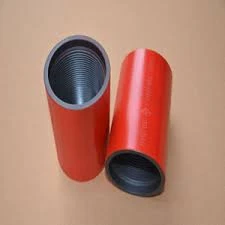- Afrikaans
- Albanian
- Amharic
- Arabic
- Armenian
- Azerbaijani
- Basque
- Belarusian
- Bengali
- Bosnian
- Bulgarian
- Catalan
- Cebuano
- Corsican
- Croatian
- Czech
- Danish
- Dutch
- English
- Esperanto
- Estonian
- Finnish
- French
- Frisian
- Galician
- Georgian
- German
- Greek
- Gujarati
- Haitian Creole
- hausa
- hawaiian
- Hebrew
- Hindi
- Miao
- Hungarian
- Icelandic
- igbo
- Indonesian
- irish
- Italian
- Japanese
- Javanese
- Kannada
- kazakh
- Khmer
- Rwandese
- Korean
- Kurdish
- Kyrgyz
- Lao
- Latin
- Latvian
- Lithuanian
- Luxembourgish
- Macedonian
- Malgashi
- Malay
- Malayalam
- Maltese
- Maori
- Marathi
- Mongolian
- Myanmar
- Nepali
- Norwegian
- Norwegian
- Occitan
- Pashto
- Persian
- Polish
- Portuguese
- Punjabi
- Romanian
- Russian
- Samoan
- Scottish Gaelic
- Serbian
- Sesotho
- Shona
- Sindhi
- Sinhala
- Slovak
- Slovenian
- Somali
- Spanish
- Sundanese
- Swahili
- Swedish
- Tagalog
- Tajik
- Tamil
- Tatar
- Telugu
- Thai
- Turkish
- Turkmen
- Ukrainian
- Urdu
- Uighur
- Uzbek
- Vietnamese
- Welsh
- Bantu
- Yiddish
- Yoruba
- Zulu
casing coupling dimensions
Understanding Casing Coupling Dimensions in Oil and Gas Industry
Casing coupling dimensions play a crucial role in the oil and gas industry, particularly in ensuring the integrity and functionality of drilling and completion operations. In drilling applications, casing is a series of steel pipes that line the borehole, providing stability and protecting freshwater aquifers from contamination. Couplings are essential components that connect these casing lengths, facilitating a seamless and robust structure essential for efficient drilling operations.
Casing couplings come in various dimensions and specifications to meet industry standards and accommodate different wellbore conditions. The dimensions of these couplings are determined based on several factors, including the type of casing being used, the depth of the well, and the geological characteristics of the area being drilled. Generally, casing diameters range from 4.5 inches to 20 inches, with each size having its corresponding coupling dimensions that ensure a secure connection.
One of the critical aspects of casing coupling dimensions is the weight and grade of the coupling material. Couplings are typically manufactured from high-quality steel that can withstand the extreme pressure and temperature conditions encountered during drilling operations. The most common grades of casing steel are J55, K55, N80, and L80, each designed for specific applications. The coupling’s dimensions must not only match the casing but also provide sufficient strength and durability to handle downhole stresses and prevent failure.
casing coupling dimensions

Another essential consideration is the thread type used in the coupling. Casing couplings are available with various threading options, including API (American Petroleum Institute) threads, which are standardized to ensure compatibility between different manufacturers. It is vital that the correct thread type is selected, as improper threading can lead to leaks, casing integrity failure, and costly operational delays.
Moreover, manufacturers often follow specific dimensional standards outlined by API and other governing bodies to produce casing couplings that meet safety and quality benchmarks. These standards dictate critical dimensions such as the outer diameter, inner diameter, thickness, and overall length of the coupling. Compliance with these standards not only ensures a reliable connection but also facilitates easier installation and maintenance processes.
In conclusion, understanding casing coupling dimensions is essential for safe and efficient drilling operations in the oil and gas sector. By selecting the appropriate coupling size, thread type, and material grade, operators can ensure the structural integrity of the casing, which is vital for preventing wellbore collapse and contamination. As technology advances and new drilling techniques emerge, staying informed about casing coupling dimensions will continue to be crucial for industry professionals seeking to optimize their drilling performance and safeguard environmental interests.
-
Tubing Pup Joints: Essential Components for Oil and Gas OperationsNewsJul.10,2025
-
Pup Joints: Essential Components for Reliable Drilling OperationsNewsJul.10,2025
-
Pipe Couplings: Connecting Your World EfficientlyNewsJul.10,2025
-
Mastering Oilfield Operations with Quality Tubing and CasingNewsJul.10,2025
-
High-Quality Casing Couplings for Every NeedNewsJul.10,2025
-
Boost Your Drilling Efficiency with Premium Crossover Tools & Seating NipplesNewsJul.10,2025







